- Author Jason Gerald [email protected].
- Public 2023-12-16 10:50.
- Last modified 2025-01-23 12:04.
Windows XP is one of Microsoft's most popular operating systems, and although it's starting to show signs of aging, many people still use it exclusively. It doesn't matter whether you have an old computer that you want to restart or you want to install XP on your new computer, the installation will only take a moment. See Step 1 below to get started.
Step
Part 1 of 3: Starting the Setup Process
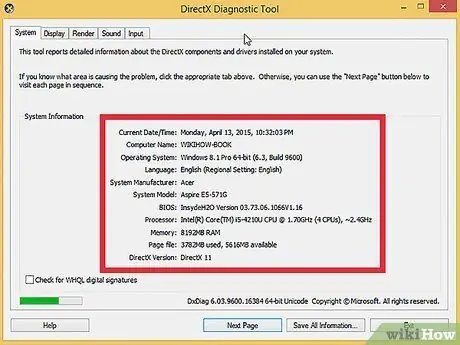
Step 1. Make sure that your computer can run Windows XP
Your computer must meet or exceed the minimum system requirements to run Windows XP. You can search your computer's system information by checking the manual from your computer manufacturer, or by running DirectX Diagnostic on the Windows operating system already on the computer.
- To start DirectX Diagnostic, open the Run dialog (press WinKey+R simultaneously), type dxdiag, and click OK.
-
Minimum System Requirements
- 300 MHz Intel or AMD CPU
- 128 megabytes (MB) of system RAM
- 1.5 gigabytes (GB) of free drive space
- Super VGA (800x600) or higher display adapter
- CD or DVD-ROM
- Keyboard and mouse, or other pointing device
- Network Interface Adapter required for Internet and Network Connectivity
- Sound card and speakers or headphones
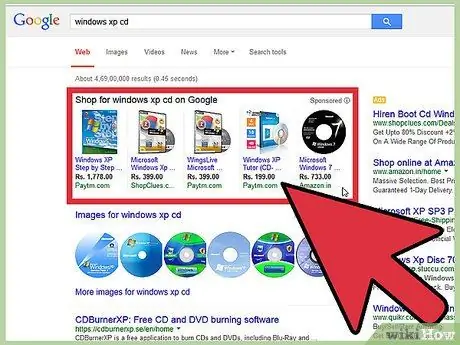
Step 2. Find the Product Key of your Windows XP
It is printed on a sticker on your software package or resides on the computer itself. It is a string of 5 character groups (5 characters each), separated by a dash, which contains 25 characters in total. You will need a product key to complete the Windows installation.
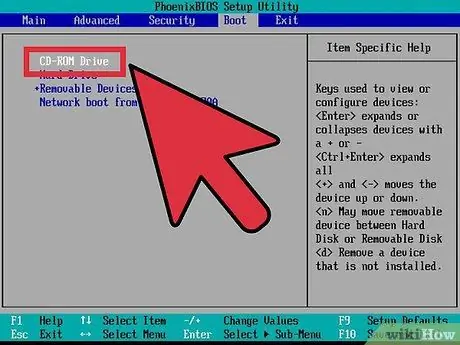
Step 3. Set your computer to boot from CD/DVD
Before inserting the CD, you must set your computer to boot from the CD, not the hard drive. This will be used to load the Windows XP setup files before your computer boots into the installed operating system. You can change the boot order from the BOOT menu in your computer's BIOS.
- To enter your computer's BIOS, you can usually press F9 or DEL when your computer is turned on or when the computer tells you that you can enter "setup". Click the green "BIOS" link for more information.
- In the BOOT menu, set the order so that your CD/DVD-ROM drive is set as the 1st Boot Device.
- If you are installing Windows XP from a USB drive, make sure that the USB drive is set as the 1st Boot Device. You may have to plug the USB drive into the computer for the options to appear.
Part 2 of 3: Installing Windows XP
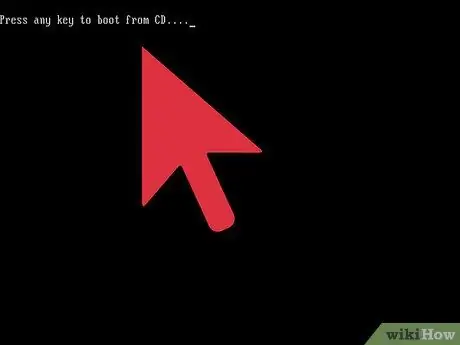
Step 1. Load the installer
After you have set the Boot order, insert the Windows XP CD into your drive and Save and Exit from the BIOS. Your computer will reboot and will display the message:
Press any key to boot from CD
. Press any key on the keyboard to start the Setup program.
Setup will load the files needed to start the installation, which can take a few moments. Once loading is complete, you will be taken to the Welcome screen
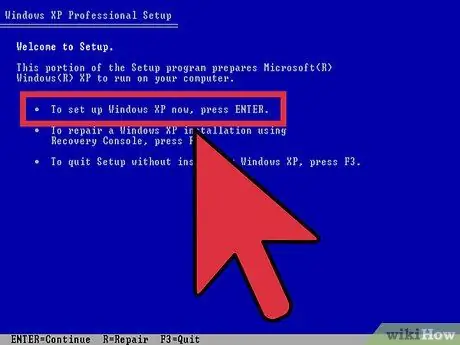
Step 2. Press ENTER to start the installation
After loading is complete, you will be taken to the Welcome screen. You will be given several options, but if you are installing or reinstalling Windows XP, you must press ENTER to start the installation configuration.
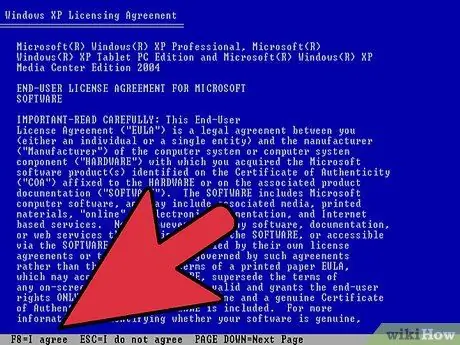
Step 3. Read the License Agreement
This document tells you about what you can and cannot do with Windows, and your rights as a consumer. After reading, press F8 to indicate that you agree to the terms.
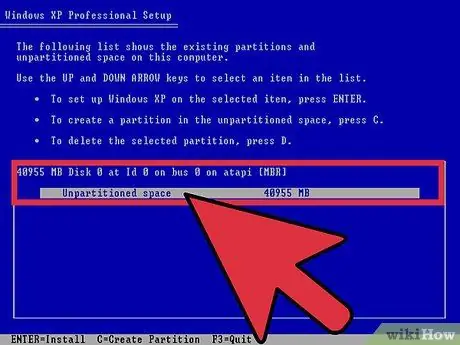
Step 4. Select the partition you want to mount with XP
You will see a list of available partitions on your hard drive. If you installed Windows XP on a new hard drive, you will see only one entry with the name "Unpartitioned space." If your computer has a Windows or Linux version installed, you will have multiple partitions.
- Installing Windows XP will delete all data on the partition you selected. Choose a partition that is empty or contains data that is not important to you.
- You can delete your partition by pressing "D". This will return it to "Unpartitioned space". Any data on that partition will be lost when the partition is deleted.
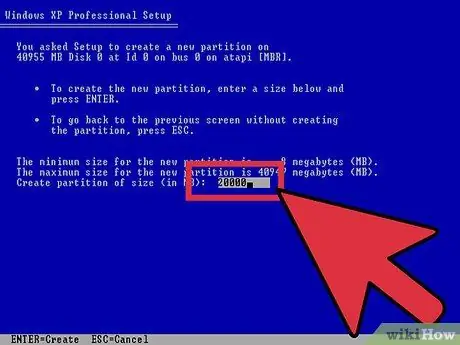
Step 5. Create a new partition
Select Unpartitioned space and press "C". This will open a new screen where you can set the partition size from the available space. Enter the size in megabytes (MB) for the new partition and press ENTER.
- By default, the partition will be set to the maximum amount of available space. Unless you plan to create multiple partitions, you can usually leave them by default.
- Windows XP requires a minimum of 1.5 gigabytes (1536 MB) for installation files, but you'll need more free space than that for programs, documents, downloads, and other files. 5 gigabytes (5120 MB) is a good starting amount for Windows XP, and even more if you plan to install a lot of programs.
- You can create multiple partitions on a single drive. This you can use to separate your programs from movies and music, or to install another operating system. Windows XP can only be installed on one separate partition.
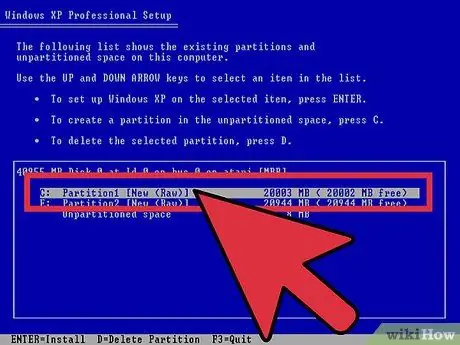
Step 6. Select your new partition
Once you have created the partition for installation, you will again be taken to the partition selection screen. Select your new partition, usually labeled "C: Partition 1 [Raw]" and press ENTER.
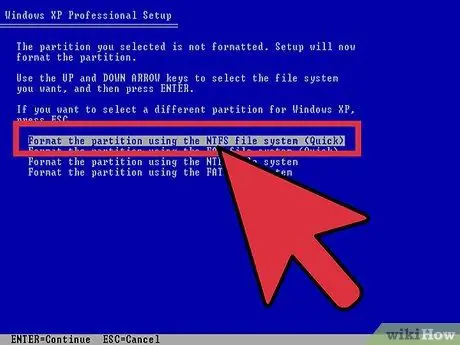
Step 7. Select "Format the Partition using the NTFS File System" and press ENTER
NTFS is the preferred method, supports a larger amount of disk space per partition than FAT, and contains security features at the file system level. NTFS also contains system level compression. There is hardly any good reason to choose FAT.
- If your partition size is larger than 32 GB, you will not be given the option to select FAT.
- It is highly recommended to avoid Quick Format, as this will skip the important process that checks the hard drive for errors or bad sectors. It is this scan that takes the longest if you do a full format. If there's a disk error at the physical level, it's certainly better to find out now than later.
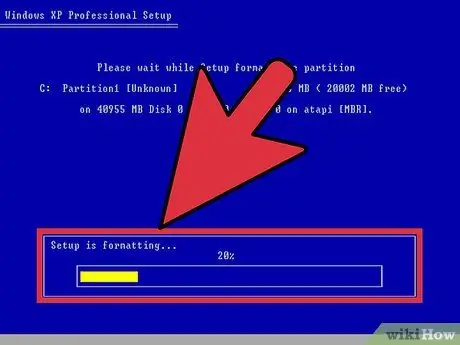
Step 8. Wait for the formatting to complete
The system is now formatting the partition. The length of time this process takes depends on the speed and size of the drive. In general, the larger the partition, the longer the process will take.
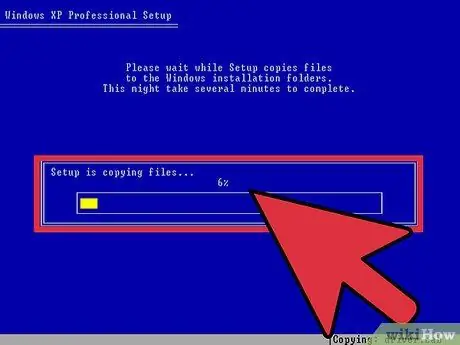
Step 9. Wait for the Setup file to copy
Windows will start copying the files from the installation disc and will ask you to reboot the computer when the process is complete. Press ENTER if prompted to reboot, or the computer will reboot itself automatically after 15 seconds.
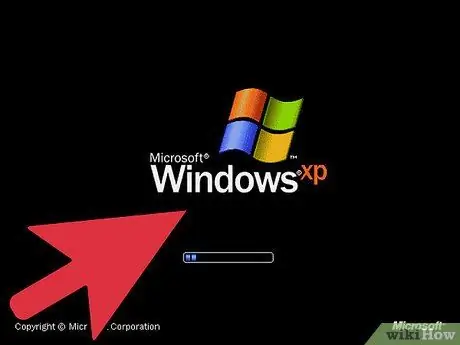
Step 10. Let the computer boot normally
You will see a message asking you to press a key to boot from the CD. Just ignore it and allow the computer to continue booting from the hard drive. You will see the Windows logo when the Setup program loads.
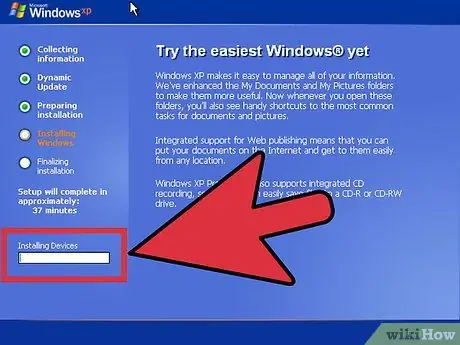
Step 11. Wait for the installation to proceed
Once the Windows logo is gone, you'll see a list of remaining steps on the left side of the screen, and tips for using windows on the right. The remaining installation time will be displayed below the list of remaining steps.
It is normal for the screen to flicker, turn on and off, or change in size during this process
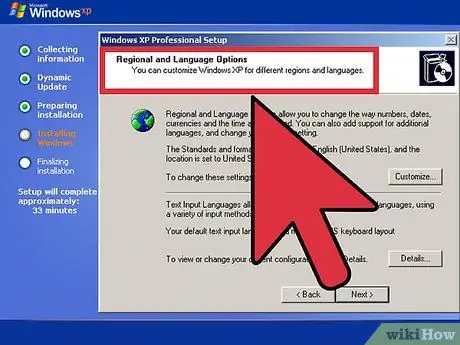
Step 12. Select your language and region settings
During the installation process a dialog window will appear, asking you to select Regional settings. Choose the setting that suits your area. Click the Next button when you are finished.
Enter the full name if you wish. It will be set as the "owner" of Windows, and will be attached to certain things, such as Document creation

Step 13. Enter your Product Key
You will not be able to complete the installation process without having a valid Product Key. Click "Next" to continue.
Some versions of Windows will not ask for the Product Key until the installation is complete
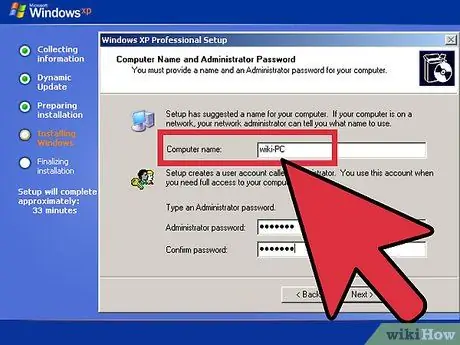
Step 14. Specify your computer name
This will be the name that represents that computer on the network. Windows determines the default name, but you can change it to your liking. You can also specify a password for the Administrator account. This is optional, but highly recommended for public computers.
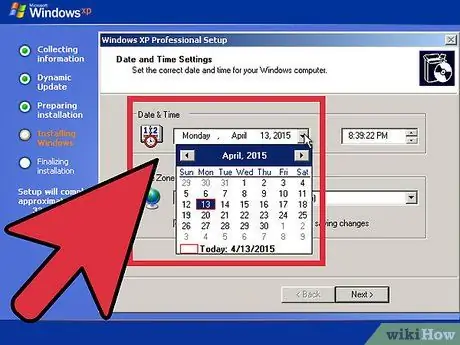
Step 15. Select your time zone
Make sure that the date/time is correct. Click "Next" to continue.

Step 16. Select your network settings
Almost any user who has Windows XP installed on their home or personal computer can leave "Typical Settings" selected for Network Setup. If you are installing Windows XP in a corporate or academic environment, consult your system administrator, although Typical Settings will most likely still work.
- In the next window, most users can select “No, this computer is not on a network, or is on a network without a domain.” If you are in an enterprise setting, ask the system administrator which one you should choose.
- You can usually leave the workgroup name set by default.
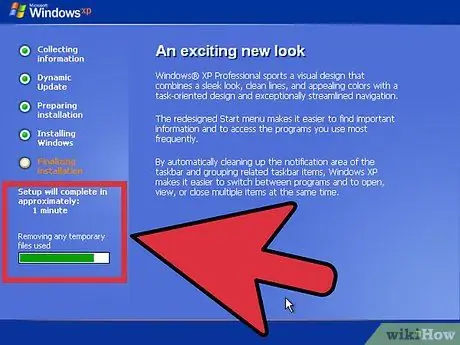
Step 17. Wait for the installation to complete
This should only take a few minutes, and the computer will reboot when the installation is complete. After the computer reboots, you will be taken to the Windows XP desktop. At this point, the installation is complete, although there is still some work to be done before Windows is fully usable.
Part 3 of 3: Finishing the Installation
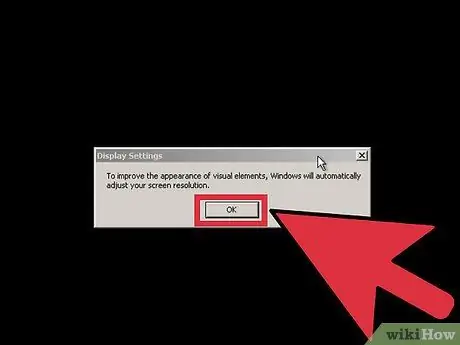
Step 1. Set your display preferences
After Windows loads, you will be notified that Windows will automatically configure your display. Click OK to start the configuration. Your screen will flash a few times, then you will be asked if you can see the box that appears.
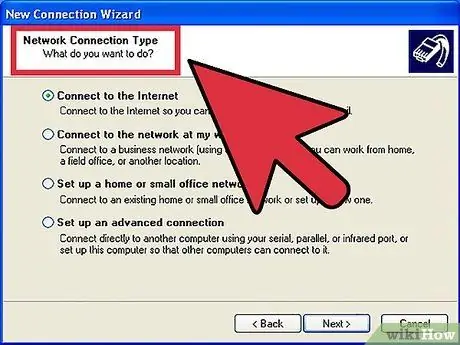
Step 2. Set your connection preferences
If your computer is connected to the internet, select your connection type. Press Next to continue.
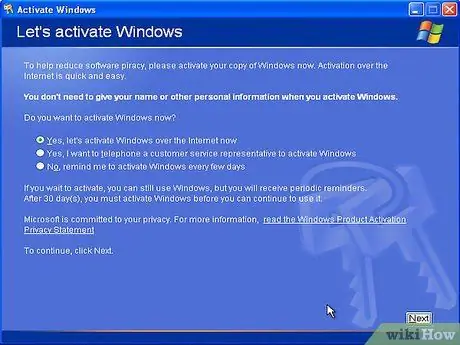
Step 3. Activate your copy of Windows
If connected to the Internet, Select "Activate Now." Windows will connect to the activation server and automatically check the authenticity of your copy of Windows. If you haven't entered your Product Key, you should enter it now.
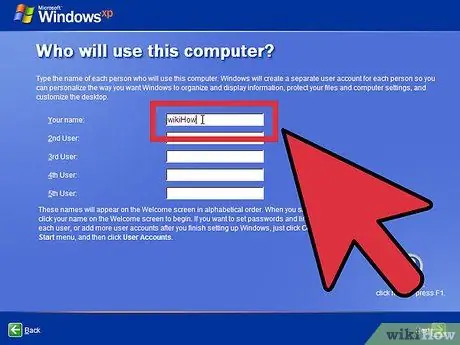
Step 4. Create User
After the Activation Process, a window will appear which you can use to select a user for the computer. Enter your name, and the names of other people who will be using the computer. Press Next to continue.
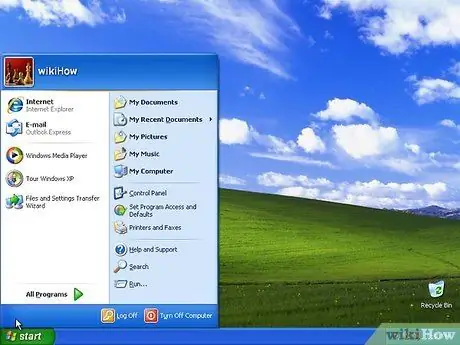
Step 5. Start using Windows
Now you will see the Windows XP Desktop by default. Safe! There are a few things you may need to do now to get your Windows running properly:
- Install any drivers you need for your computer hardware.
- Install an antivirus program if you are connected to the internet.
- Set the BIOS to re-boot from the hard drive instead of the CD.
Tips
- Setup usually takes 15 to 40 minutes depending on the speed of your system. It's a good idea to stay close to your computer, because throughout the installation, you'll be asked for things like Time and Network settings.
- If you experience difficulties with the installation, Windows Setup will provide technical information about the error that occurred, which can help determine the cause. Check the troubleshooting site on the Microsoft site for help with general installation issues.
- Don't forget to set the boot priority in your BIOS. On older systems, the BIOS is set to read Floppy, HDD and THEN CD-ROM. You must set the boot priority to load the CD-ROM before the Floppy and HDD.
Warning
- Do not attempt to install Windows on a system that does not meet the minimum requirements.
- Some users who installed Windows XP from a disk with Service Pack 2 or below encountered problems in the early stages of installation on modern computers, characterized by repeated reboots, or Blue Screen Error (BSOD). This is because some disks lack drivers for SATA hard drives. To fix this, the user must either embed the drivers on a copy of the installation CD, or place the required drivers on a floppy disk and add them to the installation list manually.
- Make sure to activate Windows within 30 days of installation, otherwise the system will not allow you to log into Windows until the activation is complete.
- You can install Windows more than once on one partition, but this can make your computer system unstable in the future. Download software such as Partition Magic 8, to safely divide the hard drive into multiple partitions.






